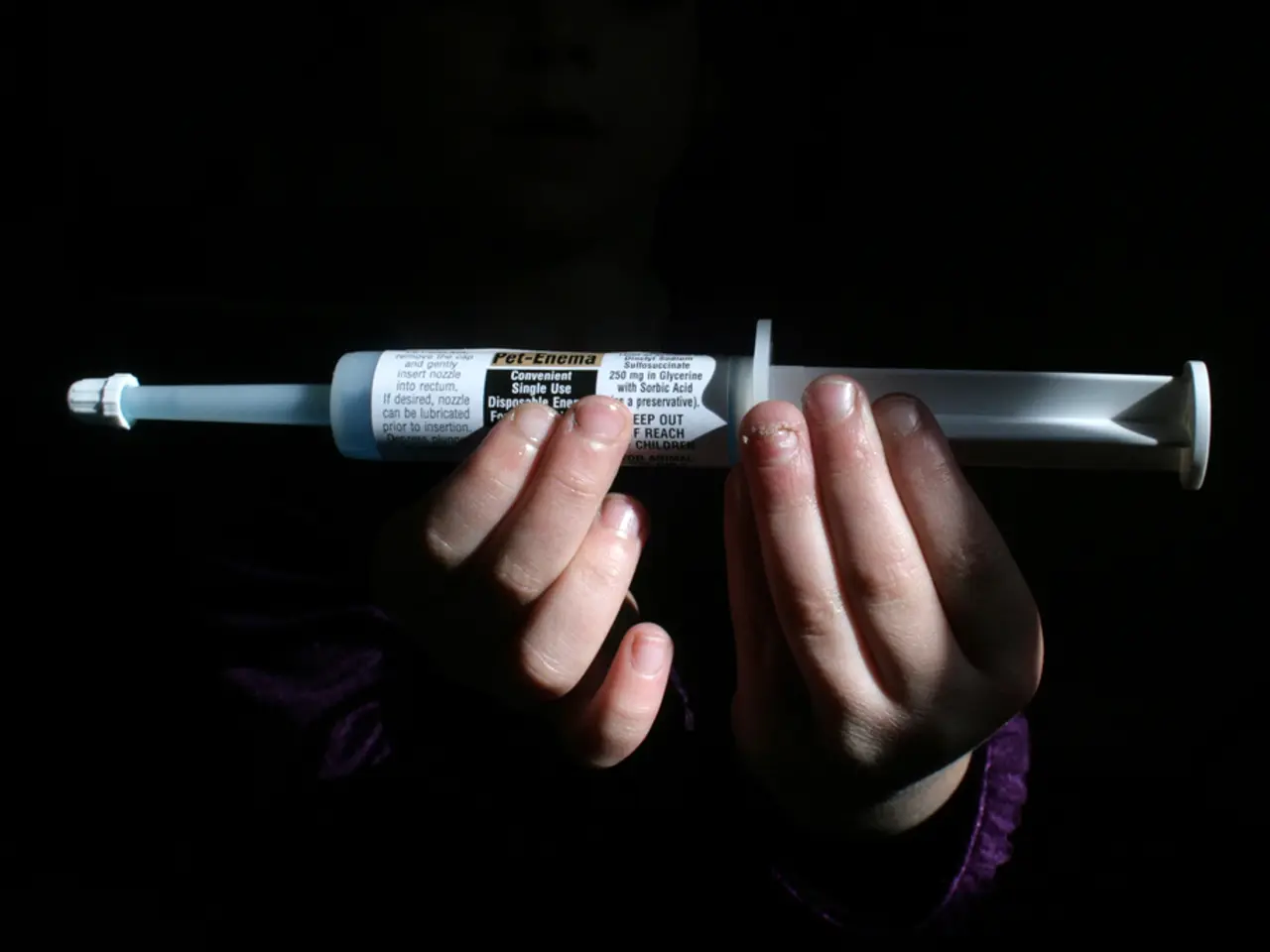Angioplasty Procedure, Variants, Potential Complications, and Healing Process
Angioplasty, also known as percutaneous coronary intervention (PCI), is a commonly used medical procedure that opens up a blocked or narrowed artery around the heart. This minimally invasive treatment is often employed for individuals suffering from coronary heart disease (CHD) or heart attacks (acute coronary syndrome).
The process begins with a healthcare professional cleaning and numbing the area where the catheter enters the body, typically in the groin or wrist. A tube, or catheter, is then inserted, and the doctor guides it towards the affected artery around the heart. To aid in this process, the doctor uses live X-rays and a contrast dye to visualise the arteries and identify any blockages.
Once blockages are located, the doctor inserts a second catheter and a guidewire, usually with a balloon at the tip. The balloon is inflated to push the plaque buildup away and open up the artery. In some cases, a stent (a metal tube) may also be inserted to keep the artery propped open.
Stents can be made of bare metal or have a coating of medication, with drug eluting stents (DES) being used almost exclusively. Research from 2018 estimates that doctors in the U.S. implant over 1.8 million stents each year.
While angioplasty is considered a safe and well-tolerated procedure, it's important to be aware of the potential risks and complications. Patients with severe narrowing or blockage of coronary or peripheral arteries, those with other diseases such as diabetes or kidney disease, and the condition of the arteries can influence complication risks.
Common complications include bleeding or hematoma at the catheter insertion site, damage to the artery or blood vessel, heart attack or stroke during or shortly after the procedure, blood clot formation, infection, re-narrowing of the artery (restenosis) after the procedure, and stent-related complications such as stent migration or deformation.
Despite these risks, major complications like heart attack, stroke, or death occur in less than 1% of patients. Minor complications such as bleeding, bruising, or blood clots at the insertion site are more frequent but generally manageable.
Careful patient selection, operator expertise, and preventive measures are essential to minimise these risks. Prior to the procedure, patients may need to undergo kidney tests due to the contrast dye used affecting kidney function, and they should inform their doctor about all medications and supplements they are taking, which may need to be stopped before the angioplasty, especially blood thinners.
Individuals may need to avoid food or drinks for several hours before the angioplasty procedure as they will be sedated. The procedure itself can take anywhere from 30 minutes to a few hours, and the person may need to stay in the hospital overnight for observation.
Patients should be alert to symptoms like chest pain after angioplasty, as this may indicate restenosis or other issues requiring prompt medical attention. With proper care and understanding of the risks, angioplasty can provide a valuable treatment option for many individuals dealing with heart conditions.
- In the realm of cardiovascular health, angioplasty, also known as percutaneous coronary intervention (PCI), is a common treatment for individuals carrying medical conditions such as coronary heart disease (CHD) or acute coronary syndrome (ACS).
- During the angioplasty process, a healthcare professional might employ drug eluting stents (DES), which are coated stents made of medication, to help prop open the artery in preparation for a blocked or narrowed cardiovascular system.
- When it comes to health-and-wellness, patients should be well-acquainted with the possible risks and complications associated with angioplasty. Some of these risks may include stent-related complications like stent migration or deformation, as well as minor complications such as bleeding, bruising, or blood clots at the insertion site.
- In the science of medical-conditions, a careful patient selection, operator expertise, and preventive measures are crucial in minimizing the risks of potential complications. For instance, doctors might require patients to undergo kidney tests before the procedure due to the contrast dye's impact on kidney function.
- When managing their health-and-wellness, individuals should avoid food or drinks for several hours before the angioplasty procedure since they will be sedated, and it's essential to disclose to their medical team all medications and supplements they are taking, especially blood thinners, to facilitate a successful treatment.




